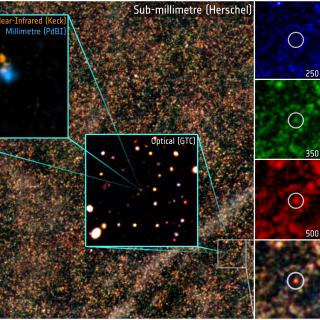Bibcode
Kelly, Patrick L.; Diego, Jose M.; Rodney, Steven; Kaiser, Nick; Broadhurst, Tom; Zitrin, Adi; Treu, Tommaso; Pérez-González, Pablo G.; Morishita, Takahiro; Jauzac, Mathilde; Selsing, Jonatan; Oguri, Masamune; Pueyo, Laurent; Ross, Timothy W.; Filippenko, Alexei V.; Smith, Nathan; Hjorth, Jens; Cenko, S. Bradley; Wang, Xin; Howell, D. Andrew; Richard, Johan; Frye, Brenda L.; Jha, Saurabh W.; Foley, Ryan J.; Norman, Colin; Bradac, Marusa; Zheng, Weikang; Brammer, Gabriel; Benito, Alberto Molino; Cava, Antonio; Christensen, Lise; de Mink, Selma E.; Graur, Or; Grillo, Claudio; Kawamata, Ryota; Kneib, Jean-Paul; Matheson, Thomas; McCully, Curtis; Nonino, Mario; Pérez-Fournon, I.; Riess, Adam G.; Rosati, Piero; Schmidt, Kasper Borello; Sharon, Keren; Weiner, Benjamin J.
Referencia bibliográfica
Nature Astronomy, Volume 2, p. 334-342
Fecha de publicación:
4
2018
Número de citas
181
Número de citas referidas
147
Descripción
Galaxy-cluster gravitational lenses can magnify background galaxies by a
total factor of up to 50. Here we report an image of an individual star
at redshift z = 1.49 (dubbed MACS J1149 Lensed Star 1) magnified by more
than ×2,000. A separate image, detected briefly 0.26″ from
Lensed Star 1, is probably a counterimage of the first star demagnified
for multiple years by an object of ≳3 solar masses in the cluster.
For reasonable assumptions about the lensing system, microlensing
fluctuations in the stars' light curves can yield evidence about the
mass function of intracluster stars and compact objects, including
binary fractions and specific stellar evolution and supernova models.
Dark-matter subhaloes or massive compact objects may help to account for
the two images' long-term brightness ratio.
Proyectos relacionados

Formación y Evolución de Galaxias: Observaciones Infrarrojas y en otras Longitudes de Onda
Este grupo desarrolla varios proyectos extragalácticos en diferentes rangos del espectro electromagnético utilizando satélites y telescopios en tierra para estudiar la evolución cosmológica de las galaxias y el origen de la actividad nuclear en galaxias activas. En el aspecto instrumental, el grupo forma parte del consorcio internacional que ha
Ismael
Pérez Fournon